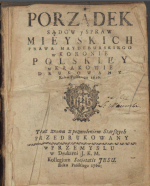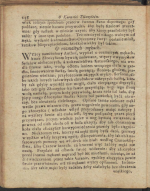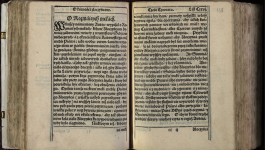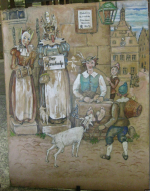Thats a fascinating and very in depth look on that issue. Thank you!
However I don't know if we agree on this that goat liking heels of the criminals is factual... wheter it primary intention was to tickle or not is I think irrelevant because we do know for a fact that it does and it would for a while before anything else occurs.
Well, the problem is that it has never been confirmed. For one thing, no documentary source affirms it by direct testimony. There is only the
Theatrum humanae vitae of Zwinger the Elder, which associates this torture with "Sardonian laughter", but he speaks of it by hearsay (he borrows the story from Bonfini, a century after the events) about the tortures that were allegedly practiced at Dracula's court, of which we know that : 1. it was undoubtedly invented for political propaganda (to peddle the inhuman sadism of this prince), 2. it could not have provoked laughter, since they were associated with a slashing of the feet with a sword to tear the flesh, according to another source closer to Bonfini. Zwingler therefore distorts the facts. The second source that mentions this association between laughter and goat torture is von Grimelshausen's account of the adventures of the Simplicissime, which is a pure work of fiction that may have drawn its inspiration from Zwinger.
And that's all. In my opinion, this is a possible source of misunderstanding.
Moreover, every time anyone has tried to stage this "torture" "in real life" in our time, no particular suffering is observed, nor even a tickling effect. I have in mind a German show where they seriously tested it on two women, whose reactions weren't very convincing, another German show (Die Burg) where there was no reaction, etc., and outside of TV shows, a fetishist once performed it on a girl who had no reaction, another fetishist does it on himself and seems to tolerate it very well. In short, "in real life", I have never seen anything that would allow me to say that this "torture" causes a "tickling" comparable to "torture".
Also the quote "said to be cruel without causing bodily harm..." might of course indicate that it was about irritating and tormenting sensitive feet. I can't say for sure because it's not clear I agree.
This formula was first used by Bruni in 1495. All the others simply copied it, from treatise to treatise.
Two things must be understood:
First, these legal treatises attempt to provide judges with means of applying torture without causing bodily harm, if possible. Therefore, the formula "safe for health" recurs periodically. And there is a possible contamination of another, unrelated "goat torture," the "goat" in question being a pointed piece of wood on which the patient was balanced with ropes, a torture also presented as "safe for health" (which seems to me doubtful). One might reasonably wonder whether there wasn't, at some point during the tedious writing of these long treatises, a confusion between two "goat tortures" that had absolutely no connection with each other. And the one using a piece of wood called a "capra" (= "goat") was widely used in Italy.
Then, these jurists of the 15th and 16th centuries also sought to spread an encyclopedic knowledge, in keeping with Renaissance mentalities, mixed with a medieval spirit where people customarily copied lists found in ancient authors without question. So we have a sort of standard list, which is repeated from treatise to treatise, but this does not mean that it reflects any real practice at any given time. We would have to ask how it ended up in Bruni's treatise, and that remains a mystery to be solved. It is not impossible that Bruni simply repeated what Bonfini had recounted about Dracula from hearsay (my hypothesis because it corresponds to the time when Bonfini wrote his
History of Hungary), the goal being to amass as many diverse and varied tortures as possible.
However I would like to point out a small but important detail about polish language that might cause you to misinterpret the meaning of this quote: « Wżeyż namieniony Author, wypisai o rozmaitych mękach, w które Złoczyńcom bywają zadawane, więcey z wymysłów Sędziów niebacznych, a z okrucieństwa Katowskiego, niż wedle Prawa. »
Well you see the word "wymysł" (or used "wymysłów" used gramtically here) does mean generally "imagination", however it has another meaning that is used exactly in context like in this sentence, which means "on a whim"... so for example "Tak sobie wymyśliłem" would mean "That was my will" and not "That was my imagination".
Therefore, assuming that you read this as a "Tale of jugdes and sadistic executioners" it is not what that would tipically mean. It would mean "that wasn't a lawful way but they did it anyways because they were sadistic and depraved"
Groicki explicitly cites Damhoudère's treatise to criticize it, considering it dangerous to divulge lists of cruel tortures without condemning their use, which Damhoudère does not do. Groicki therefore distances himself from his model and reminds judges that they must refrain from sadism and resort to torture only if necessary to bring out the truth. Groicki's attitude is also somewhat in line with a mystical Polish author of the following century, Joachim Jerlics, who wrote a chronicle,
Postępek prawa czartowskiego, in which he explicitly condemns the excessive use of torture, which he considers "diabolical." All this seems to indicate that locally, judges had to commit atrocities, and that people like Groicki sought to channel them, which is also the logic previously followed by Bruni, Damhoudère and all the others. But does the use of tickling goats fall under the umbrella of these atrocities beyond the scope of the law? Probably not, in my opinion.
But nothing prevents us from imagining it fictionally, of course.
In conclusion. I do agree its not 100% certain that goat torture = tickling from this text but I do belive the text describes actual practices rather than ficticious tales.
I love your work as well!
Thanks ! My style is very "naive," but I hope to present something worthwhile one day.












